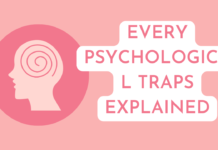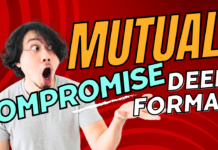Paper-I
Section A
1. Answer the following (each answer should be 150 words:–10 × 5 = 50
(a) Has judiciary been a hindrance or a facilitator in the interpretation of Directive Principles? Examine in the light of various judgments of the Supreme Court? (10 MARKS)
(b) “Fundamental duties are only ethical or moral duties and should not form a part of the fundamental law.” Comment (10 MARKS)
(c) Is ‘Commercial advertisement’ covered within the ambit of ‘freedom of speech and expression’? Discuss with reference to leading cases. (10 MARKS)
(d) Critically examine the constitutional validity of an amendment deleting Article 16(4) and authorizing the State to make job reservation in favour of the backward classes of citizens. (10 MARKS)
(e) Doctrine of equality under the Constitution cannot be applied to legitimize an illegal act. Can equality be invoked to justify another wrong? Critically examine with reference to cases. (10 MARKS)
2. (a) Do you agree with the view that “equality is antithesis of arbitrariness. In fact equality and arbitrariness are sworn enemies”? (25 MARKS)
(b) “The Constitution of Indian merely subscribes to three-fold division of gubernatiorial functions and not to the doctrine of separation of powers in its absolute rigidity.” Comment. (25 MARKS)
3. (a) The goals specified in the Preamble contain basic structure of our Constitution, which cannot be amended under Article 368. Elaborate in context of leading cases. (25 MARKS)
(b) What restrictions have been imposed by the Constitutional Amendment (44th) to check misuse of proclamation of emergency? Discuss (25 MARKS)
4. Write critical notes on the following: 50
(a) Residuary Powers. (15 MARKS)
(b) Whether law relating to preventive detention can be challenged for violation of Article 19? (15 MARKS)
(c) Introduction of Uniform Civil Code. (20 MARKS)
Section – B
5. (a) “Due to increasing penetration of international legal rules within the domestic systems, the distinction maintained between two autonomous zone of international and municipal law has been somewhat blurred.” Explain with special reference to Indian practice. How international legal rules emanating from customs and treaties, influence the actions of domestic agencies? (10 MARKS)
(b) While conclusion a multilateral treaty, a State can make reservation(s) and the other State(s) may accept or reject such reservation(s) without jeopardizing the object and integrity of the treaty. Discuss the need and relevance of reservations in treaty law in the light of above statement. (10 MARKS)
(c) Explain the right and duties of coastal state over continental shelf, exclusive economic zone and high seas as defined under the provisions of UN Convention on law of Sea (III), 1982. (10 MARKS)
(d) The Arbitration Commission of European Conference on Yugoslavia emphasized in opinion no. 2 that “it is well established that whatever the circumstances, the right to self-determination must not involve change to existing frontiers at the time of independence (Uti possidetis juris) except where the states concerned agree otherwise.” (10 MARKS)
(e) “State are not under a duty to recognize a nationality acquired by a person who has no genuine link or connection with the naturalizing state.” In the light of above statement, explain the concept of ‘nationality’ and its acquisition with the help of suitable instances. (10 MARKS)
6. (a) “The substance of customary law must be looked into primarily in actual practice and ‘opinio juris’ of the States.” In the light of above statement and by referring to case law, explain the interplay between objective and subjective elements in acceptance of a particular custom as a source of international law. (25 MARKS)
(b) “States are subject to a duty under International Law to recognize a new State fulfilling the legal requirements of Statehold, but the existence of such a duty is not borne out by the weight of precedents and practices of States. The decision of a State in according or withholding recognition is a matter of vital policy that each State is entitled to take by itself.” Reconcile and argue which of these two statements (extreme views) regarding recognition of a State given by Lauterpacht (obligatory) and by Podesta Costa (Facultative) is more appropriate, with the help of instances in regard to de facto and de jure recognition. (25 MARKS)
7. (a) The concepts of ‘necessity’ and ‘proportionality’ are the heart of self-defence in International Law. Explain, the light of UN Charter and recent trend of extending these to ‘pre-emptive’ or ‘anticipatory’ self-defence due to ‘the imminence of attacks and advancement in armaments’. ( 25 MARKS)
(b) A group of three men (L, M and N) citizens of country A, posing as officers of premier investigating agency of A, rob a huge jewelry shop and then flee away to country, B where they are granted asylum. Government of A, requests B to extradite L, M and N in terms of extradition treaty between them. B declines. A sends spies to B who abduct L, M and N and who produce them before the Court in A. ‘B’ approaches ICJ against use of force by ‘A’. Prepare (i) A brief of arguments for A, (ii) A brief of argument for B, (iii) Opinion of the Court. (25 MARKS)
8. (a) Chapter VI of UN Charter is devoted to peaceful settlement of International Disputes. Discuss the methods mentioned and explain the role of Security Council and General Assembly in this regard, and the role such settlement plays in obviating the need to resort to Chapter VII measures. (25 MARKS)
(b) A member of European Union has witnessed widespread disturbances, consequent upon a military coup, including censorship on all forms of media and communication, targeting civilians sympathetic with the ousted by assaulting and killing, severe rationing and control on essential commodities such as fuel and food resulting into galloping inflation. In the light of these grave violation of human right, examine the role of : (i) Security Council (ii) European Court of Human Rights (25 MARKS)
Paper -II
Section – A
1. Answer the following (answer to each part must not exceed 125 words). Support your answer with the help of legal provisions and decided cases: 10 × 5 = 50 (a) “The word ‘Voluntary’ as used in the Indian Penal Code is very significant and it does not mean willingly but knowingly or intentionally.” Explain. (10 MARKS)
(b) “Fake police encounters are nothing but murders and police officers committing it without any protection of law to them deserve death penalty as the cases fall into rarer of the rarest category.” Comment. (10 MARKS)
(c) “Nuisance as a tort means an unlawful interference with a person’s use or enjoyment of land or some right over or in connection with it.” Comment (10 MARKS)
(d) “Involuntary drunkenness is a defence.” Critically examine the law relating to intoxication as defence. (10 MARKS)
(e) “The definition given under the Consumer Protection Act, 1986 gives altogether a new legal colour and scope to the term ‘Consumer’.” In the light of this statement, explain the term ‘Consumer’. (10 MARKS)
2. (a) X, the producer of a film showing life of ‘homosexuals’, is prosecuted under Section 292 of the Indian Penal Code, alleging that the film was obscene and indecent. The film was certified by the Censor Board of Film of India for public shows. X intends to claim protection against his charge under Section 79 of the Indian Penal Code. Can he do so? Justify your answer. (25 MARKS)
(b) The natural calamity in Uttrakhand left hundreds dead. Some people were seen removing gold ornaments, watches and other valuables from these dead bodies. Few days later, police apprehended them and wanted to prosecute them. Under which provision of the Indian Penal Code can they be prosecuted? Discuss (25 MARKS)
3. (a) “Assault is an act of the defendant which causes to the plaintiff reasonable apprehension of the infliction of a battery on him by the defendant.” Comment and distinguish between assault and battery. (20 MARKS)
(b) X sends an e-mail to Y containing defamatory matters against him. The e-mail is received by Y who deletes it after reading. Is X liable for publication? Refer to relevant case law. (15 MARKS)
(c) X, while driving car, suddenly became unconscious and fell back in his seat. The car became uncontrolled, it hit and killed Y. discuss the liability of X. (15 MARKS)
4. (a) “Plea bargaining, which was considered unconstitutional, illegal and tending to encourage complaint, collusion and pollution of the pure punt of justice, is now a part of sentencing under the Indian Criminal Law.” Comment (25 MARKS)
(b) Q refused to marry her boyfriend P, resulting into P’s depression. Mr. R, a friend of P, suggested him to take revenge with an intention that P will come out of shock. R provided with a bottle of liquid believing it as acid. P mistook X to be Q in darkens and threw it on her (X) causing rashes on the face of X, which later resulted into serious injuries. The investigations revealed that it was not acid but was a concentrate of fungicide. Decide the liability of P and R in the case, keeping in mind that defence which may be available to P and R. (25 MARKS)
Section B
5. Answer the following (answer to teach part must not exceed 125 words). Support your answer with legal provisions and decided cases: 10 × 5 = 50
(a) “Indemnity’ has relation to the conduct either of the indemnifier himself or of a third party. A ‘Guarantee’ is always related to the conduct of a third party.” Elucidate (10 MARKS)
(b) “Privity of contract is no longer a rule but only an exception.” Explain in the context of modern transactions. (10 MARKS)
(c) “The copyright exists in expression but not in idea.” Discuss with the helf of the provisions of Copyright Act and case law. (10 MARKS) MODEL ANSWER HINT:
(d) “The principle of ‘holding out’ is based on the principle of estoppels.” Elucidate. (10 MARKS)
(e) “Once an instrument passes through the hands of a holder in due course, it is purged of all defects, it is true like a current coin.” Explain (10 MARKS)
6. (a) “It has been a common statement of the law that while relief is available for certain kinds of mutual mistake, it is unavailable for unilateral mistake unless the other party knew or had reason to know of the mistake.” Critically examine the statement with leading case law. (25 MARKS)
(b) Critically analyse the term ‘inventive steps’ as incorporated under the Patent (Amendment) Act, 2005. Do you agree with the present definition? Refer to recent case law. (25 MARKS)
7. (a) “An attempt by all political parties to bring amendments to the RTI Act, 2005 is to sabotage the steps towards transparency of governance in this country.” Critically evaluate the statement. (25 MARKS)
(b) In matters such as enforcement of social, economic, cultural or political rights or civil liberties or gender concerns, courts in India have been inclined to apply relaxed rules of standing or litigational competence rather than strict rules of locus. Discuss. (25 MARKS)
8. (a) Competition Law in India has not achieved the result as was expected. Discuss the bottlenecks with which it suffers and suggest the remedies necessary to make it fruitful. (25 MARKS)
(b) Corporate causing havoc to the wildlife existing on seashores is an extreme type of environmental crime and laws are almost non-existent to deal with them directly. Discuss. (25 MARKS)











